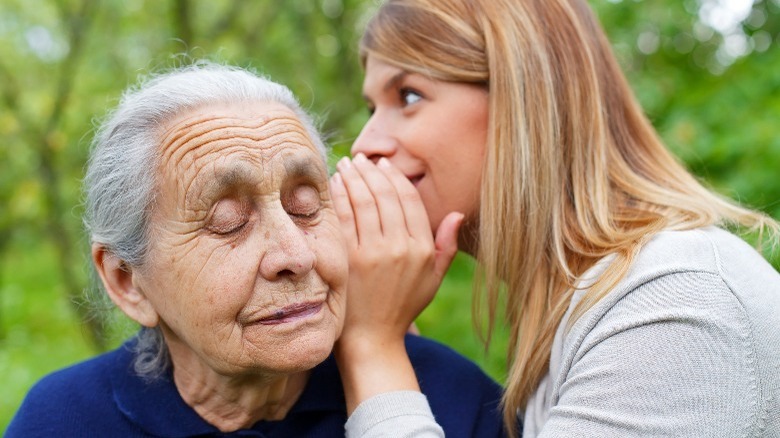This Type Of Human Hair Can't Actually Grow Back
Except for areas like the palms of our hands and the soles of our feet, our bodies are covered in hair. Part of this hair falls out daily as part of the natural hair growth cycle. In fact, the American Academy of Dermatology (AAD) says that it's entirely normal for people to lose between 50 to 100 hairs every day.
But there's a unique type of "hair" within our ears that doesn't regenerate. To be clear, these aren't the same as the hairs you can see on your outer ear. These tiny inner ear hair cells, named for their hair-like projections called stereocilia, are buried deep within the cochlea and serve as the ear's primary sensory receptors (via Cleveland Clinic).
When sound waves enter the ear, their vibrations send ripples in the fluid-filled cochlea and cause the hair cells to bend. These sensory receptors translate this bending motion into electric signals that are then carried to the brain, enabling us to perceive sound.
What happens when hair cells get damaged?
According to the National Institutes of Health, any damage to these specialized cells in humans and other mammals can lead to irreversible hearing loss because of the cells' inability to regenerate. In contrast, non-mammals like reptiles, fish, and birds possess the ability to regenerate theirs and, consequently, recover from hearing loss.
To be specific, damaged hair cells lead to sensorineural hearing loss or nerve-related hearing loss, a type of hearing loss that is caused by damage to inner ear hair cells or nerve fibers in the inner ear. At present, sensorineural hearing loss still has no cure.
Interestingly, a recent study published in the Proceedings of the National Academy of Sciences of the United States of America successfully identified and tested a cocktail of drug-like molecules that would reprogram supporting cells in the ears of adult mice to convert into cells similar to hair cells. This groundbreaking research could potentially pave the way for innovative treatments for hearing loss in the future.
Causes of hair cell damage
According to the Centers for Disease Control and Prevention (CDC), even when a hearing test might not detect any hearing loss, as much as 30% to 50% of your hair cells could already be damaged by that point.
Exposure to loud sounds is among the leading cause of hair cell death, either from a one-time loud event close to your ear or prolonged exposure to intense noise. This noise exposure strains the hair cells, with the damage progressing as long as you're exposed.
The CDC also warns that the risk of hearing loss increases with longer exposure times, and louder sounds can inflict damage on hair cells in a shorter amount of time. Some common sources of loud noise include personal music players, sirens, fireworks, and tools like chainsaws and lawnmowers. Concerts, events, and movie theaters are also sources of loud sounds.
Aside from loud noises, other possible causes of sensorineural hearing loss include aging, certain illnesses, medications that are toxic to hearing, genetic issues, and head injuries (via America Speech-Language-Hearing Association).



